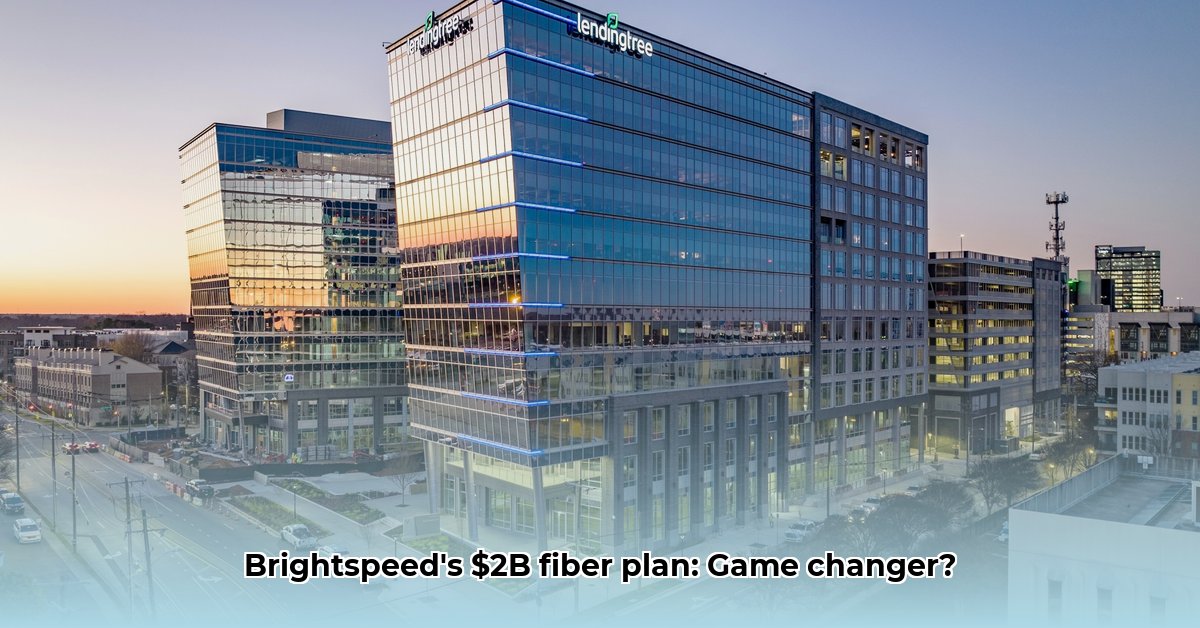
Brightspeed's Ambitious Fiber Optic Gamble: A $2 Billion Investment in Connectivity
Brightspeed's $2 billion fiber optic network expansion across 20 states represents a significant gamble on the future of broadband access. From its Charlotte, North Carolina headquarters, the company is orchestrating a complex project with the potential to reshape the telecom landscape. But will this audacious plan deliver the promised returns? This in-depth analysis explores the strategic considerations, leadership, challenges, and potential impact of Brightspeed's undertaking. Will this massive investment prove to be a winning strategy in a highly competitive market?
The Leadership Team: A Veteran Squad Tackling a Mammoth Undertaking
Brightspeed's leadership boasts extensive experience in the telecom industry, accumulating over 300 years of combined expertise from major players like Verizon and AT&T. This experienced team holds the keys to navigating the complex challenges ahead. Their combined knowledge and acumen are crucial to tackling the multifaceted complexities of the project. However, past success is no guarantee of future triumphs in the dynamic telecom arena. How will this seasoned leadership translate experience into market dominance?
Fiber Optic Expansion: A High-Stakes, Long-Term Investment
The $2 billion investment in fiber optic infrastructure represents a long-term bet on connecting underserved communities. This strategy mirrors a long-term investment, similar to planting a tree and waiting years for its maturity. While the potential rewards are substantial – bringing high-speed internet access to millions – the risks are equally significant. Will the substantial initial investment yield the expected long-term benefits? The choice of Charlotte as headquarters suggests a strategic focus on talent acquisition and leveraging the city’s existing business infrastructure.
Navigating a Competitive Landscape: Competing Against Telecom Giants
Brightspeed faces stiff competition from established giants like AT&T, Verizon, and Comcast. To differentiate itself, the company needs a competitive edge. This might involve superior customer service, innovative bundled packages, or a laser focus on specific underserved markets. The Brightspeed team must demonstrate strategic agility and precision to successfully navigate this highly competitive market. How will Brightspeed differentiate itself and carve out a significant market share?
Integrating Lumen's Assets: A Complex Merger with Significant Implications
The acquisition of assets from Lumen presents considerable integration challenges. Merging disparate systems, cultures, and operational processes requires careful planning and strong leadership. The success of this integration directly impacts the overall success of the project and will serve as a significant test of the company's management capabilities. Can Brightspeed successfully integrate Lumen’s assets to avoid significant operational setbacks?
Regulatory Hurdles: A 20-State Maze of Permits and Compliance
Expanding across 20 states necessitates navigating diverse regulatory environments. Securing permits, managing rights-of-way, and addressing potential legal challenges require proactive and adaptable strategies. Even minor delays can have significant ripple effects, impacting the project’s timeline and budget. How will Brightspeed effectively navigate the complex regulatory landscape across multiple states?
Key Stakeholders and Their Objectives: A Multifaceted Perspective
The success of Brightspeed's project depends on the alignment of various stakeholders' interests. Here's a summary of key objectives:
| Stakeholder | Short-Term Goals (0-1 Year) | Long-Term Goals (3-5 Years) |
|---|---|---|
| Brightspeed Leadership | System integration; network construction; permit acquisition | Profitability; market share expansion; brand recognition |
| Investors | Network development monitoring; financial performance analysis | Return on Investment (ROI) assessment; potential increased investment |
| Customers | Improved service and reliability | Access to high-speed internet in underserved areas |
| Regulators | Compliance monitoring; promotion of fair market competition | Evaluation of market impact of Brightspeed's expansion |
| Employees | Role transitions; cultural adaptation | Career growth opportunities; contribution to company success |
Mitigating Regulatory Challenges: A Multi-Pronged Strategy
Successfully deploying fiber optic networks in rural areas demands a comprehensive approach to address regulatory hurdles. This involves:
- Proactive regulatory engagement: Fostering transparency and building strong relationships with regulatory bodies.
- Streamlining permitting: Advocating for accelerated review times and clear guidelines.
- Leveraging government incentives: Actively pursuing grants and subsidies.
- Public-private partnerships: Collaborating with governments to share resources and expertise.
- Addressing environmental concerns: Prioritizing environmentally responsible practices.
- Securing right-of-way access: Negotiating easements effectively and diplomatically.
Technological Innovations: Bridging the Infrastructure Gap
Innovative technologies play a crucial role in overcoming infrastructure limitations in rural areas:
- Directional Drilling (HDD): Minimizes environmental impact and streamlines cable installation.
- Aerial Deployment: Cost-effective but weather-dependent.
- Hybrid Approaches: Combining aerial and underground deployment for optimal efficiency.
Competition and Collaboration: A Balancing Act
While competition stimulates innovation, avoiding monopolistic practices and fostering collaboration with smaller providers ensures a level playing field and benefits consumers.
This $2 billion investment represents a significant undertaking with the potential to significantly expand broadband access, but its ultimate success depends on careful execution, effective stakeholder management, and the ability to overcome numerous hurdles. The coming years will be pivotal in determining whether Brightspeed's ambitious gamble pays off.